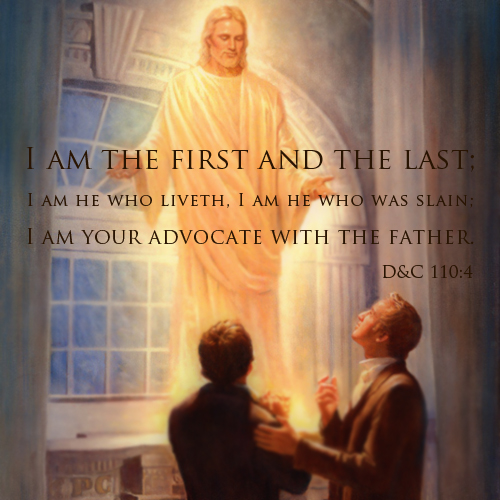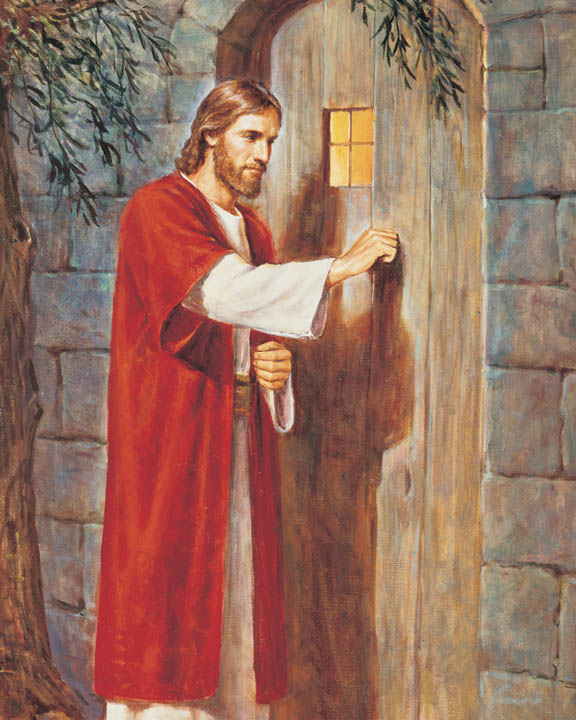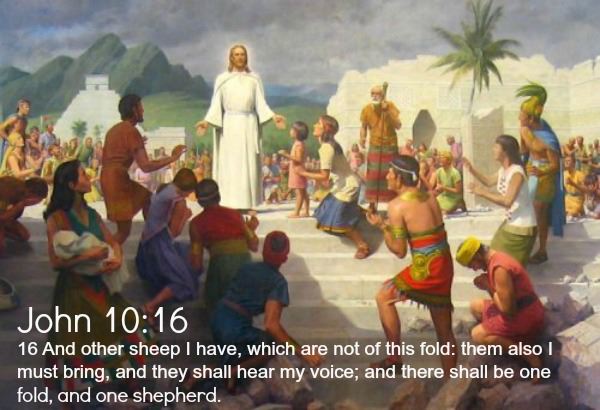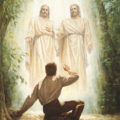Picture your hand in a glove. Wiggle your fingers and the glove moves too. Now remove the glove and set it aside. Your fingers still move, but the glove is lifeless. Now put the glove back on your hand moves the glove again.
Most members of The Church of Jesus Christ of Latter-day Saints (inadvertently called the Mormon Church) will recognize this as an object lesson on the resurrection. Every human being is comprised of a physical body (the glove) and a spirit (the hand). When we die, the spirit leaves the body (remove the glove), which causes the body (the glove) to lose its source of life: the spirit (the hand). Through resurrection, body and spirit are reunited to live forever in perfected form, never to die again.
Jesus Christ, the First to Be Resurrected
 The resurrection of all God’s children—every person who has lived, is living, or will yet live—is made possible through the resurrection of Jesus Christ. In our premortal life with our Heavenly Father, Jesus was designated as the Savior who would redeem us from the effects of the fall of Adam—which brought mortality, sin, and death into the world. Jesus declared that He would lay down His life and take it up again. (See John 10:15–18.)
The resurrection of all God’s children—every person who has lived, is living, or will yet live—is made possible through the resurrection of Jesus Christ. In our premortal life with our Heavenly Father, Jesus was designated as the Savior who would redeem us from the effects of the fall of Adam—which brought mortality, sin, and death into the world. Jesus declared that He would lay down His life and take it up again. (See John 10:15–18.)
The New Testament records several accounts of those who saw the resurrected Lord; for instance:
• Mary Magdalene (John 20:16–17)
• Other women (Mark 16:1)
• His apostles (Matthew 28:16–19; Luke 24:42–43; John 20:26–28; John 21:1–24)
• Peter (1 Corinthians 15:5)
• Five hundred men (1 Corinthians 15:6)
• James (1 Corinthians 15:7)
• Paul (1 Corinthians 15:8)
• Stephen (Acts 7:55)
Christ also visited the Nephites (3 Nephi 11 through 26) in the New World. Joseph Smith, the first president of The Church of Jesus Christ, saw Him many times. (See Joseph Smith—History 1:17, for example.) Joseph Smith and Oliver Cowdery (an early Church leader) recorded one of the more descriptive accounts of Jesus Christ:
We saw the Lord standing upon the breastwork of the pulpit, before us; and under his feet was a paved work of pure gold, in color like amber.
His eyes were as a flame of fire; the hair of his head was white like the pure snow; his countenance shone above the brightness of the sun; and his voice was as the sound of the rushing of great waters, even the voice of Jehovah, saying:
I am the first and the last; I am he who liveth, I am he who was slain; I am your advocate with the Father (Doctrine and Covenants 110:1–4).
What Happens to Spirits after Death?
The Book of Mormon teaches that there is “a space betwixt the time of death and time of the resurrection” (Alma 40:6):
Now, concerning the state of the soul between death and the resurrection—Behold, it has been made known unto me by an angel, that the spirits of all men, as soon as they are departed from this mortal body, yea, the spirits of all men, whether they be good or evil, are taken home to that God who gave them life.
And then shall it come to pass, that the spirits of those who are righteous are received into a state of happiness, which is called paradise, a state of rest, a state of peace, where they shall rest from all their troubles and from all care, and sorrow.
And then shall it come to pass, that the spirits of the wicked, yea, who are evil—for behold, they have no part or portion of the Spirit of the Lord . . . and these shall be cast out into outer darkness; there shall be weeping, and wailing, and gnashing of teeth, and this because of their own iniquity, being led captive by the will of the devil.
Now this is the state of the souls of the wicked, yea, in darkness, and a state of awful, fearful looking for the fiery indignation of the wrath of God upon them; thus they remain in this state, as well as the righteous in paradise, until the time of their resurrection. . . .
There is a space between death and the resurrection of the body, and a state of the soul in happiness or in misery until the time which is appointed of God that the dead shall come forth, and be reunited, both soul and body, and be brought to stand before God, and be judged according to their works. (Alma 40:6, 11–14, 21)
During this time, all beings will be given the chance to hear the gospel of Jesus Christ and to accept Him as their Savior. (See Doctrine and Covenants 138:19–37.) Mormons believe this is a time for preparing God’s children for judgment and resurrection. Spirits of men and women in the spirit world awaiting resurrection have just as much freedom of choice as they did on earth, and thus, they can repent after learning the doctrines of Christ. Since Christ’s atonement and visit to the spirit world, spirits in spirit prison who repent, move to spirit paradise to await resurrection.
The Beginning of the Resurrection of Mankind
Latter-day revelation teaches that the first resurrection began immediately after Jesus Christ was resurrected, when the righteous dead who had lived from the day of Adam to the time of Christ arose with him. (See Doctrine and Covenants 133: 54–55.) The New Testament bears the same testimony:
“And, behold the veil of the temple was rent in twain from the top to the bottom; and the earth did quake, and the rocks rent; And the graves were opened; and many bodies of the saints which slept arose, And came out of the graves after his resurrection” (Matthew 27:51–53).
The Righteous Resurrected at the Second Coming of Christ
This first resurrection will continue at the time of Christ’s second coming to the earth:
And the saints that are upon the earth, who are alive, shall be quickened and be caught up to meet him.
And they who have slept in their graves shall come forth, for their graves shall be opened; and they also shall be caught up to meet him in the midst of the pillar of heaven—
They are Christ’s, the first fruits. (Doctrine and Covenants 88:96–98)
The Timing of the Second Resurrection
The rest of those spirits who wait for resurrection, who are part of the resurrection of the unjust (Doctrine and Covenants 76:17), or as John calls it, “the resurrection of damnation” (John 5:29), shall come forth after a period of a thousand years—the millennial period of peace and righteousness when Christ will reign personally upon the earth and fully establish the kingdom of God on the earth. (See Doctrine and Covenants 88:101; 133:25).
“In My Father’s House Are Many Mansions . . .”
Joseph Smith revealed that the word mansions is better translated as kingdoms.1 Latter-day revelation defines and describes those main kingdoms of glory as celestial, terrestrial, and telestial, with divisions within these kingdoms. (See Doctrine and Covenants 76.)
Each person is assigned a kingdom according to God’s judgment of his life, his obedience, and his desires. Each of God’s children will receive glory according to his or her ability to abide that glory, and according to the person’s comfort. (See Doctrine and Covenants 88:20–33.) “For what doth it profit a man if a gift is bestowed upon him, and he receive not the gift? Behold, he rejoices not in that which is given unto him, neither rejoices in him who is the giver of the gift” (Doctrine and Covenants 88:33).
Conclusion
Our Father in Heaven planned for our eternal fullness of joy. He intended for His children to rejoin Him in His heavenly home after their earth life to live with Him eternally. He has revealed His plan of salvation through revelation. Through His plan, He has provided comfort, direction, and blessings to help His children come home.
Note:
1. Teachings of the Prophet Joseph Smith, comp. Joseph Fielding Smith (Salt Lake City: Deseret Book, 1938), 366.




